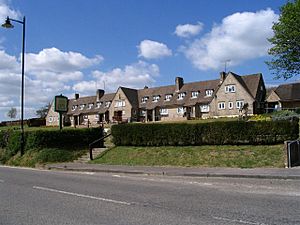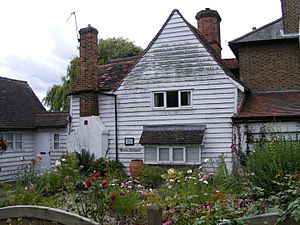Martyrs' Cottages facts for kids
The Tolpuddle Martyrs were a group of six farm workers from Tolpuddle, a village in Dorset, England. In the 1830s, they tried to form a union to get better pay because their wages were very low. For this, they were arrested and sent far away to Australia as punishment. Their story is an important part of history about workers' rights. Many cottages are connected to their story, mostly in Tolpuddle, but one is in Essex.
The Martyrs often met secretly in the cottage of Thomas Standfield in Tolpuddle. This cottage and the one next to it are very old, built around the 1700s. They are made from a mix of plastered cob (a natural building material) and brick. These cottages are now joined together as one home. They are also special because they are "Grade I listed buildings," which means they are very important historical places that must be protected.
Remembering the Tolpuddle Martyrs
In 1934, a big group called the Trades Union Congress (TUC) built six new cottages in Tolpuddle. They did this to remember the 100-year anniversary of the Martyrs being sent away. Each cottage was named after one of the six Martyrs. These homes were meant for older farm workers who were no longer able to work. Often, these workers lived in "tied cottages," which meant their homes were provided by their employer. When they retired, they could lose their homes.
A small library for the people living in these new cottages grew into a museum. This museum now tells the story of the Martyrs and how trade unions help workers. Over the years, there have been some discussions about how these cottages are used. For example, in 2009, there were talks about one being used as a shop or a holiday home instead of for retired workers.
Homes After Their Return
After some years, three of the Martyrs – George Loveless, James Loveless, and James Brine – were forgiven and allowed to come back to England. From 1838 to 1844, they lived in a cottage in Greensted. This cottage is very old, built in the 1500s, with parts that might be even older, from the 1300s! This home is also a "Grade II listed building," meaning it's an important historical place.
Images for kids





